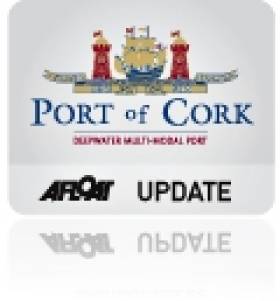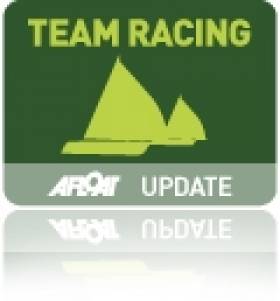Displaying items by tag: Schools Initiative
Port Of Cork Schools Initiative Focuses On The Gathering For 2013
Calling all 5th Class Teachers – Win a Free Boat Trip around Cork Harbour for your class
The Port of Cork has launched their Schools Initiative for 2013 and is calling on all 5th class primary school teachers to get their class involved. This year's theme 'The Gathering 2013 – Cork Harbour – Ireland's Maritime Gateway to the World' is celebrating The Gathering and Cork Harbour's strong links with Irish diaspora, both as a tourism hub today and as a departure point for Irish emigrants in the past.
The Port of Cork Schools Initiative aims to teach 5th class primary school children about the rich history of Cork Harbour and its uses today as a natural harbour, commercial port and excellent leisure amenity. All participating 5th classes who take part in the Port of Cork Schools Initiative will be treated to a boat trip around Cork harbour, compliments of the Port of Cork and each class will also receive a certificate of participation. In addition to the overall prize, awards will also be given for the best artwork piece and best photograph. The overall best project will receive a tour on board one of the many large cruise liners visiting Cork during the summer of 2013.
Speaking about the 2013 theme, Port of Cork Chief Executive Brendan Keating said: "As 2013 is the year of 'The Gathering', we are encouraging classes to think about Cork Harbour and its role as Ireland's maritime gateway to the world both as a departure point for emigrants in the past and as a gathering point for tourists today. Cork Harbour has a long association as the departure point for many Irish emigrants in the 1800s and in the 1900s. Now thousands of visitors come into our spectacular harbour on passenger ferries and on cruise liners from all over the world. For many of these tourists, their visit also provides them with the opportunity to see the place that their Irish ancestors departed from so many years ago."
Projects are to be presented in artwork format using paintings, models or photographs. Submitted projects will go on public display in Customs House before the winner is announced in April 2013. Closing date for entries is 29th March 2013.
For more information on this year's schools project and how to get involved, please contact Sinead Kavanagh, Tel: +21 4625375 or email [email protected].
Gonzaga College Win Leinster School Sailing Championships
Dublin's Gonzaga College beat Rathdown School to win the Lenister Schools Team Racing Championships after a thrilling 45 rounds of competition. Third overall were Kilkenny College from an entry of ten schools.
The inaugural event was run in fair weather last Saturday by the Royal St George Yacht Club whose Club Firefly dinghies were chartered for the event.
Some competitors were slightly rusty team racers at the beginning but within 10 races the young sailors had mastered the game with lots of one-on-one match racing and all starts bang on the line. The spirit of the event was of competitive fun with a bunch of very well mannered sailors enjoying the banter in the ribs and on the change-over vessel when not competing in the schedule of 45 rapid succession races.
The rapid skill progress was clear demonstration of the effectiveness of team racing in skill development.
Post sailing all agreed this is the start of more schools activity. This year sees the inauguration of Leinster Schools Team Sailing as an ad-hoc committee set up by Chris Craig and David Williams, both of whom have sons in St Michael's College who own boats, and ran this event.
There was 3 Wednesday afternoon coaching sessions leading up to the event, with teams of two competing. These were sailed in competitors' own Fevas with the NYC also providing their Fevas FOC. Gonzaga, the event winners, dominated the coaching. More coaching events are planned.
In other countries local authorities facilitate schools sailing but in Ireland it's up to Clubs and volunteers to service this growing and fertile market, for the general good of the Sport and Schools.
The top four teams qualify for the Nationals Schools Team Racing Championships to be run by David Harte in Schull - April 21st/22nd.
The final result is as follows :-
2012 LEINSTER SCHOOL TEAM SAILING CHAMPIONSHIPS - RESULTS
1. Gonzaga College
2. Rathdown
3. Kilkenny
4. Belvedere College
5. St Andrews College
6. Mount Anville A
7. Mount Anville B
8. Loreto College
9. St Gerards
10. Loreto Dalkey
Port of Cork Calling all 5th Class Teachers!
School-children will be able to earn about the harbour and how it could be used to harness energy such as wind, wave, gas, electricity and other forms of energy. In addition it will provide an opportunity for the participants to be creative and futuristic about Cork harbour. Children can also look at the importance of green energy in their home and school.
The projects are to be presented in artwork format using paintings, models or photographs. Submitted projects will go on public display in the Cork Customs House for six weeks before the winner is announced in April 2011.
All 5th classes who take part in the Port of Cork Schools Initiative are treated to a boat trip around Cork harbour and each class will receive a certificate of participation. Prizes will be given for the best artwork piece and best photograph.
The overall winner of the Schools Initiative project will receive a tour onboard one of the many cruise liners that are to visit Cork Harbour next summer.
Closing date for entries is 18th March 2011. For further information on this year's schools project and how to get involved you can contact Captain Pat Murphy Tel: 021 4625312 or by Email [email protected] and by logging on to www.portofcork.ie
In addition you can view below a video depicting liners of yesteryear and the cruiseships that visit Cork Harbour, the world's second largest natural harbour.






























































